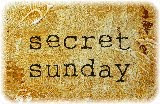 I'm (slowly) reading Gary Barlow's autobiography. He dispels some of the myths built up around the band's formation, the tiny white lies that their manager, Nigel Martin-Smith, created to help market the band in their early days. Little untruths about real ages, how they met, what jobs they did... all harmless stuff. The stories were fit for purpose; they may well have been entirely unnecessary but what is interesting is that they existed. If they existed, those little lies that meant very little, how many more are there out there and do they really matter? How much of what we believe is actually real? When is it OK to make up a past or present and when can it alter the very course of the history it is seeking to protect? As the Telegraph today fills us with the expenses and second home antics of our politicians, who do we believe? Whose agenda tells us the real story?
I'm (slowly) reading Gary Barlow's autobiography. He dispels some of the myths built up around the band's formation, the tiny white lies that their manager, Nigel Martin-Smith, created to help market the band in their early days. Little untruths about real ages, how they met, what jobs they did... all harmless stuff. The stories were fit for purpose; they may well have been entirely unnecessary but what is interesting is that they existed. If they existed, those little lies that meant very little, how many more are there out there and do they really matter? How much of what we believe is actually real? When is it OK to make up a past or present and when can it alter the very course of the history it is seeking to protect? As the Telegraph today fills us with the expenses and second home antics of our politicians, who do we believe? Whose agenda tells us the real story?In my role as communicator, I believe we should remove as much as the corporate spin as we can. Honesty is the best policy and if that means saying "sorry, we can't talk about that but as soon as we can we'll let you know", then that's the way to go. Employees are not school children, happy to accept all we tell them ("because it just is"). Maybe they can intuitively guess when they're being lied to. Or, in the case of Take That fans learning that Mark was never the tea boy at the recording studio, maybe they just can't believe that anything you say remains the truth? What harm can one little corporate exaggeration or bad piece of news brushed under the carpet make? I'll leave it to you to ponder and return to my book where our hero is about to discover the fragility of fame.




























Hmmm,I don't know about Take That,but am inclined to believe the Telegraph....or maybe I'm just picking out the bits I want to believe when I read the paper?....Now you got me thinking!
ReplyDelete